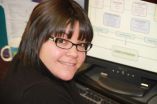(Press-News.org) A new paper shows that while science plays a critical role in informing conservation action, scientists must move beyond the realm of their expertise into less familiar areas like public relations, education, and even politics, to ultimately meet America's conservation goals.
The paper, "Moving Beyond Science to Protect a Mammalian Migration Corridor," appears in the current online edition on the journal Conservation Biology, and will appear in Volume 28 of the print edition. Authors are Joel Berger of the Wildlife Conservation Society (WCS) and the University of Montana, Missoula, and Steve Cain of Grand Teton National Park (Grand Teton).
In their paper, the authors examine the process that led to the creation of the United States' first federally designated migration corridor—Wyoming's Path of the Pronghorn (POP). The POP is a 93-mile route travelled by Grand Teton's pronghorn between their summering range in the park (where females give birth) and their wintering range in Upper Green River Valley.
Pronghorn have made this journey for more than 6,000 thousand years, but increasingly face the modern day challenges of bottlenecks and barriers created by roadways, fences, and energy development. Designation of the corridor, which both Berger and Cain worked to bring about, led to the protection of the migration. Without this corridor, one of the western United States' iconic species would ultimately vanish from Grand Teton. "The POP is a critical life-link to pronghorn in the park, where native ungulates and predators, including grizzly bears and wolves, are formidable drivers of the ecological system," Cain said.
While science played a vital role in generating data on this landmark project, the paper illustrates that science is only an initial phase in creating a desired conservation result.
"We chose this project as a case study to show that science alone cannot achieve real world outcomes and that conservation is the provenance of the people," said Berger. "The Path of the Pronghorn migration, in terms of ecological, historical, and cultural relevance, is a distinctly American treasure. As scientists there at the beginning, we had to illustrate that significance and get that message to the American public."
The scientists were initially faced with a lack of recognition for migrations and their importance. In response, they sought out an understanding of Wyoming's demographic, social, and ecological make-up, and then built local and broader public consciousness around the migration issue. They met with energy companies and elected officials (including then-Governor of Wyoming, Dave Freudenthal), engaged the media and published opinion pieces in national outlets, mobilized the conservation community, and conducted presentations and workshops for municipalities, businesses, non-governmental organizations, and local, state and federal agency officials.
The paper notes that "activism, science, trust and engagement at levels involving very basic cultural values were all important ingredients in building support for POP." These efforts, "required those involved to move away from science and become part-time information brokers and part-time conservation advocates."
Berger said, "Not all audiences were immediately receptive, but ultimately trust was built between the scientists and the public who began to recognize the global, biological, historical and economical significance of the migration as an icon of the American West."
While the paper notes that no blueprint achieves conservation outcomes in all cases, the POP case study revealed several key elements that contributed to success. These included:
1) the development of ecological insights and publications to frame issues and establish credibility;
2) a collaboration between WCS and the National Park Service that enabled opportunities and access to other agencies and NGOs;
3) support from energy producers that facilitated meetings with elected officials; and
4) targeted communications and outreach, and engaging county commissioners, ranchers, local and national NGOs, politicians and state and federal agencies.
Berger and Cain also note that a "thick skin" and calm demeanor are invaluable assets and that while science was a critical part of the discovery and ultimate designation of the POP, "human dimensions played a larger role."
INFORMATION:
How to protect an American wildlife legacy
New paper looks at the expanded role of the scientist in conservation and its impact on America's natural heritage
2014-06-24
ELSE PRESS RELEASES FROM THIS DATE:
Group recommends removing sexual orientation-related disorders from the ICD
2014-06-24
A working group evaluating sexual orientation-related disorders listed in the International Classification of Diseases (ICD), a publication of the World Health Organization (WHO), has recommended the disorders be deleted, a move that will make getting health care easier for gays and others who may have gender atypicality.
The WHO is the world body charged with deciding what is a disease and more than 170 countries, including the United States, follow their recommendations. The organization is currently revising the 10th edition of the ICD for release of the 11th edition ...
UMMS scientists show that monarch butterflies employ a magnetic compass during migration
2014-06-24
WORCESTER, MA – Each fall millions of monarch butterflies use a sophisticated navigation system to transverse 2,000 miles from breeding sites across the eastern United States to an overwintering habitat in specific groves of fir trees in central Mexico. Scientists at the University of Massachusetts Medical School and Worcester Polytechnic Institute have identified a new component of this complex system. They reported in Nature Communications that monarchs use a light-dependent, inclination magnetic compass to help them orient southward during migration.
"Taken as a whole, ...
Cancer risks increase with complex heart tests
2014-06-24
Complex heart imaging can increase cancer risks for children throughout their lifetime, according to a new study co-authored by Le Bonheur Cardiologist Jason Johnson, MD, MHS. The study, which appears in the June 9, 2014 issue of the American Heart Association's journal Circulation, is the first in which researchers quantified cumulative radiation doses in pediatric heart patients and predicted lifetime cancer risks based on the types of exposures.
In the study, Johnson and fellow researchers found that radiation from standard X-rays don't significantly raise cancer risks ...
Those with episodic amnesia are not 'stuck in time,' says philosopher Carl Craver
2014-06-24
In 1981, a motorcycle accident left Toronto native Kent Cochrane with severe brain damage and dramatically impaired episodic memory. Following the accident, Cochrane could no longer remember events from his past. Nor could he predict specific events that might happen in the future.
When neuroscientist Endel Tulving, PhD, asked him to describe what he would do tomorrow, Cochrane could not answer and described his state of mind as "blank."
Psychologists and neuroscientists came to know Cochrane, who passed away earlier this year, simply as "KC." Many scientists have described ...
Mining mountains of data for medical insights
2014-06-24
Epidemiologists know that an important piece of evidence is often staring you in the face – but it's not always easy to see the forest for the trees.
Danish scientists recently teamed up with University of New Mexico researchers to test a powerful new method for predicting the progress of common diseases through time by teasing out previously undetected patterns from a very large data set – in this case, the health records of Denmark's entire population.
This approach maps out surprising correlations: a disease like gout – a form of arthritis – is strongly linked to ...
Research explains action of drug that may slow aging, related disease
2014-06-24
Dietary restriction is one of the most-researched methods for slowing the aging process. Now, a new article published in The Journals of Gerontology, Series A: Biological Sciences and Medical Sciences helps explain the action of a drug that appears to mimic that method — rapamycin.
Rapamycin, an antibiotic and immunosuppressant approved for use about 15 years ago, has drawn extensive interest for its apparent ability — at least in laboratory animal tests — to emulate the ability of dietary restriction in helping animals to live both longer and healthier.
However, this ...
Hormones affect voting behavior, Nebraska researchers find
2014-06-24
OMAHA, Neb. – Researchers from the University of Nebraska at Omaha (UNO), the University of Nebraska-Lincoln (UNL) and Rice University have released a study that shows hormone levels can affect voter turnout.
As witnessed by recent voter turnout in primary elections, participation in U.S. national elections is low, relative to other western democracies. In fact, voter turnout in biennial national elections ranges includes only 40 to 60 percent of eligible voters.
The study, published June 22 in Physiology and Behavior, reports that while participation in electoral ...
A collaboration of minds and metal
2014-06-24
This past January, Derek Ahneman, a graduate student in the lab of Abigail Doyle, a Princeton University associate professor of chemistry, began work on an ambitious new project: he proposed the merger of two areas of research to enable a powerful reaction that neither could broadly achieve on its own.
One field, which is the Doyle research group's domain, was nickel catalysis, wherein nickel squeezes in and out of chemical bonds to bring molecules together. The other field was photoredox catalysis, which uses light to initiate a series of unique bond-breaking and bond-making ...
Researchers publish one of the longest longitudinal studies of cognition in MS
2014-06-24
Researchers at Kessler Foundation and the Cleveland Clinic have published one of the longest longitudinal studies of cognition in multiple sclerosis (MS). The article, "Cognitive impairment in multiple sclerosis: An 18-year follow-up study," (DOI: 10.1016/j.msard.2014.03.004) was epublished by Multiple Sclerosis and Related Disorders on April 13, 2014. Results provide insight into the natural evolution of cognitive changes over time, an important consideration for researchers and clinicians. Authors are Lauren B. Strober, PhD, of Kessler Foundation and Stephen M. Rao, ...
3-D printer for the world's largest delta?
2014-06-24
Boulder, Colo., USA - Three main rivers -- the Ganges, Brahmaputra, and Meghna -- meet in the Bengal basin to form the world's largest delta system, which serves as a gateway between the Himalayan mountains and the vast, deep-ocean Bengal Fan. This GSA BULLETIN paper by Stephen Goodbred and colleagues presents a new understanding of how this mega-delta, the Ganges-Brahmaputra-Meghna delta, came together over the past 10,000 years.
To determine the delta's construction during the Holocene, Goodbred and colleagues followed geochemical fingerprints to trace the paths and ...
LAST 30 PRESS RELEASES:
How do childcare tax credits affect children’s long-term health?
Can an electronic nose detect indoor mold?
Do natural disasters have long-term impacts on mortality in older adults?
Modification improves sodium‐ion batteries as an alternative to lithium-ion batteries
Parasports provide a range of benefits for people with cerebral palsy
How does grandparental care affect children’s health?
Why are there so many Nordic mediators?
Young shark species more vulnerable to extinction
Mobile fetal heart monitoring linked to fewer newborn deaths in Tanzania
Bluey’s dad offered professorial chair in archaeology at Griffith University
Beyond small data limitations: Transfer learning-enabled framework for predicting mechanical properties of aluminum matrix composites
Unveiling non-thermal catalytic origin of direct current-promoted catalysis for energy-efficient transformation of greenhouse gases to valuable chemicals
Chronic breathlessness emerging as a hidden strain on hospitals
Paleontologists find first fossil bee nests made inside fossil bones
These fossils were the perfect home for ancient baby bees
Not everyone reads the room the same. A new study examines why.
New research identifies linked energy, immune and vascular changes in ME/CFS
Concurrent frailty + depression likely boost dementia risk in older people
Living in substandard housing linked to kids’ missed schooling and poor grades
Little awareness of medical + psychological complexities of steroid cream withdrawal
Eight in 10 trusts caring for emergency department patients in corridors, finds BMJ investigation
NASA’s Webb telescope finds bizarre atmosphere on a lemon-shaped exoplanet
The gut bacteria that put the brakes on weight gain in mice
Exploring how patients feel about AI transcription
Category ‘6’ tropical cyclone hot spots are growing
Video: Drivers struggle to multitask when using dashboard touch screens, study finds
SLU research shows surge in alcohol-related liver disease driving ‘deaths of despair’
Rising heat reshapes how microbes break down microplastics, new review finds
Roots reveal a hidden carbon pathway in maize plants
Membrane magic: FAMU-FSU researchers repurpose fuel cells membranes for new applications
[Press-News.org] How to protect an American wildlife legacyNew paper looks at the expanded role of the scientist in conservation and its impact on America's natural heritage



